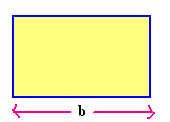Introduction to three horizontal lines:
Three horizontal lines are nothing but three lines parallel to x – axis or three lines perpendicular to y – axis. Three horizontal lines mean their slopes will be zero. Because the slope of x – axis is 0. We know if there is any two lines are parallel their slope s will be equal. We will some example problems for graphing three horizontal lines. If the line is horizontal their y value is constant.
Examples for three Horizontal Lines:
If the line is parallel to x – axis we can say those lines are horizontal lines. The slopes of the horizontal lines are zero and the y value of the line is constant. So the equation of the horizontal lines are like y = some constant value.Having problem with geometric probability formula keep reading my upcoming posts, i will try to help you.
Example 1 for three horizontal lines:
Graph the following lines y = 1, y = 5 and y = -1.
Solution:
Here the line equations are y = 1, y = 5 and y = -1
The slope intercept form general equation is y = mx + c
If we compare the given equation with general form we can get the slope of the lines are 0.
If we graph these equations we will get the graph like the following.

More Examples for three Horizontal Lines:
Example 2 for three horizontal lines:
Graph the following lines y = 2, y = 3 and y = -2.
Solution:
Here the line equations are y = 0, y = 3 and y = -2
The slope intercept form general equation is y = mx + c
If we compare the given equation with general form we can get the slope of the lines are 0.
If we graph these equations we will get the graph like the following.

In this the line y = 0 is lies on the x axis.
These are some of the examples for three horizontal lines. From the above we can understand how to graph the three horizontal lines and slopes of the horizontal lines.
Three horizontal lines are nothing but three lines parallel to x – axis or three lines perpendicular to y – axis. Three horizontal lines mean their slopes will be zero. Because the slope of x – axis is 0. We know if there is any two lines are parallel their slope s will be equal. We will some example problems for graphing three horizontal lines. If the line is horizontal their y value is constant.
Examples for three Horizontal Lines:
If the line is parallel to x – axis we can say those lines are horizontal lines. The slopes of the horizontal lines are zero and the y value of the line is constant. So the equation of the horizontal lines are like y = some constant value.Having problem with geometric probability formula keep reading my upcoming posts, i will try to help you.
Example 1 for three horizontal lines:
Graph the following lines y = 1, y = 5 and y = -1.
Solution:
Here the line equations are y = 1, y = 5 and y = -1
The slope intercept form general equation is y = mx + c
If we compare the given equation with general form we can get the slope of the lines are 0.
If we graph these equations we will get the graph like the following.
More Examples for three Horizontal Lines:
Example 2 for three horizontal lines:
Graph the following lines y = 2, y = 3 and y = -2.
Solution:
Here the line equations are y = 0, y = 3 and y = -2
The slope intercept form general equation is y = mx + c
If we compare the given equation with general form we can get the slope of the lines are 0.
If we graph these equations we will get the graph like the following.
In this the line y = 0 is lies on the x axis.
These are some of the examples for three horizontal lines. From the above we can understand how to graph the three horizontal lines and slopes of the horizontal lines.








